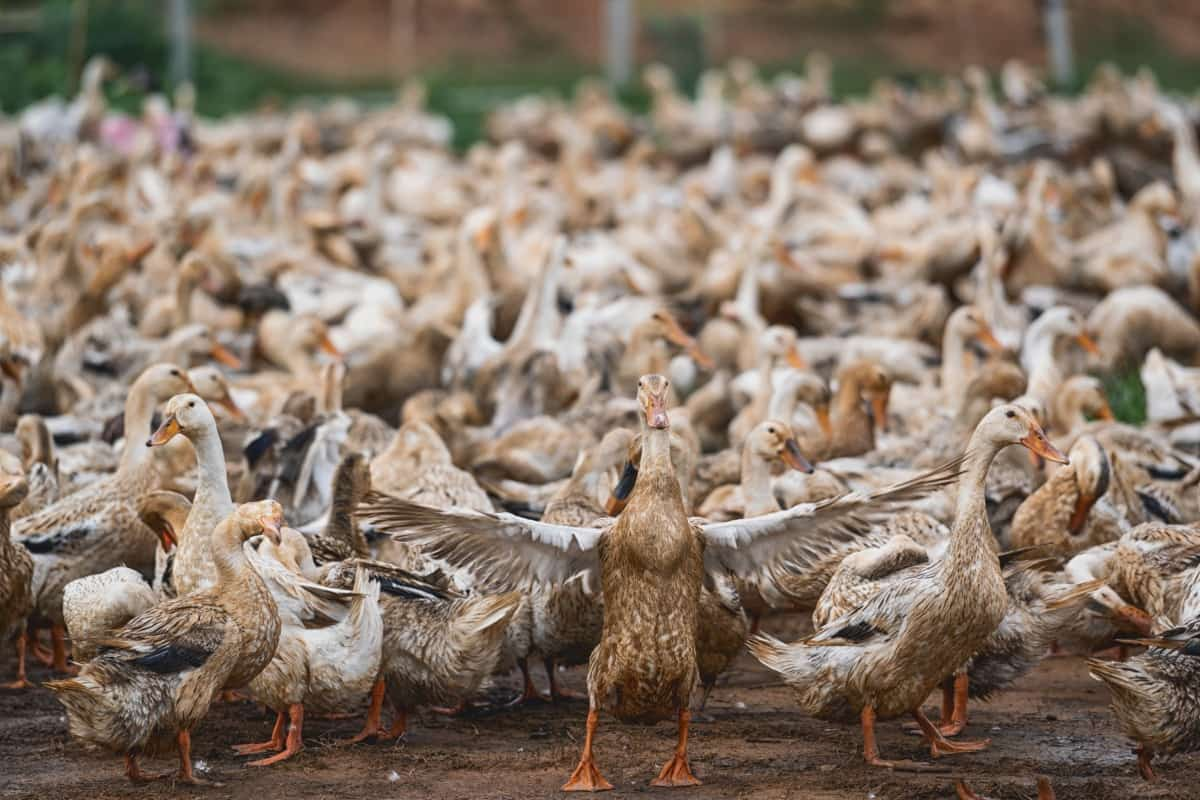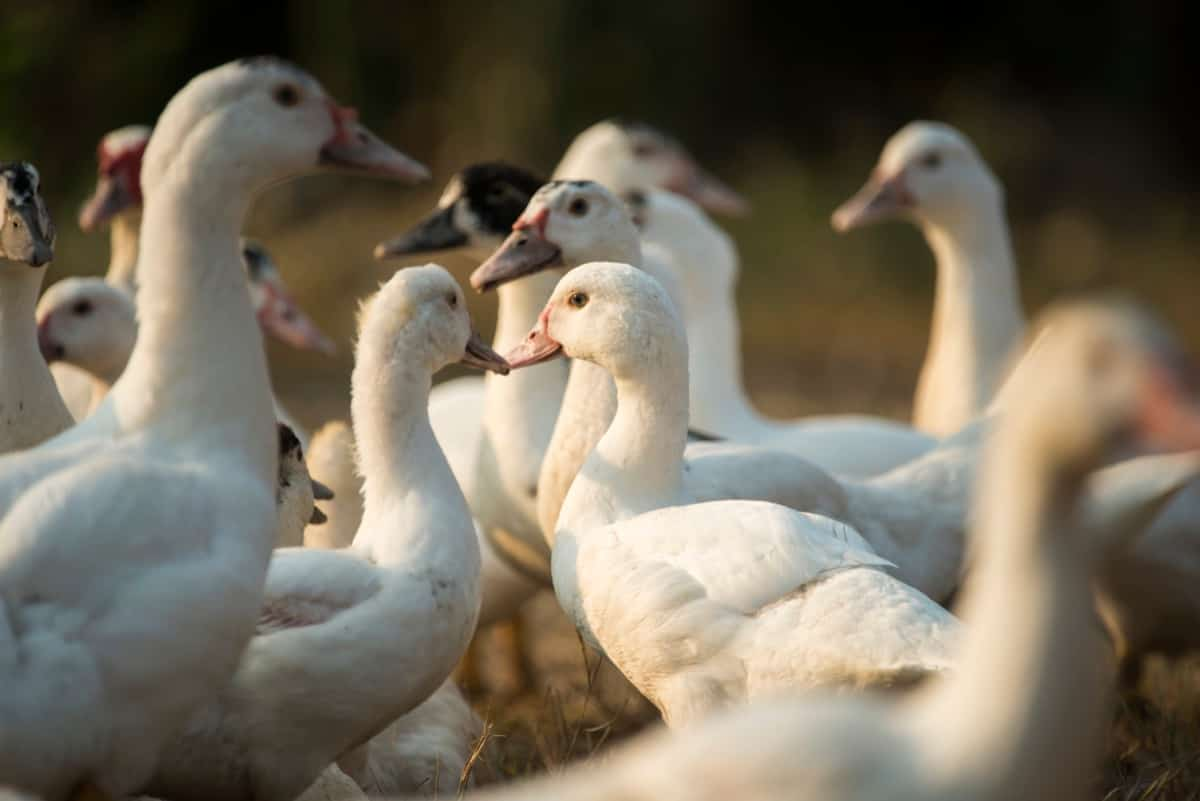Duck farming is an enterprise that has garnered increasing interest over the years. It offers many benefits ranging from a sustainable source of meat and eggs to pest control to enhancing environmental biodiversity. This article aims to comprehensively understand the top ten common mistakes for beginners and seasoned farmers to avoid in duck farming. By the end of this article, you’ll know exactly how to start a duck farm that avoids these pitfalls and capitalizes on the advantages of duck farming.

Top 10 Common Mistakes to Avoid in Duck Farming
Poor Water Quality Management for Ducks
Water quality is a vital aspect of duck farming. Ducks are waterfowl and thus have a strong affinity to water for various reasons – from feeding, bathing, and mating to maintaining body temperature. However, a common pitfall is the mismanagement of this crucial resource. Low water quality can cause health issues in ducks, such as infections in their eyes and skin, and create a breeding ground for disease-causing organisms.
Maintaining good water quality involves regular cleaning and changing of water, ensuring the water source is free from toxins and pollutants, and ensuring the water is not overly chlorinated. The water is recommended to be changed daily or at least once every two days. Water quality testing kits are also a worthwhile investment to keep tabs on the safety and cleanliness of the water.
Inadequate Housing and Space Management for Ducks
Duck housing is more than just providing shelter for your flock. It’s their shelter, their home, and a major part of their lives. As such, inadequate housing and space management is another major pitfall to avoid in duck farming. Housing should be sturdy, safe from predators, well-ventilated, and capable of protecting from adverse weather conditions.
Space is an essential component of this housing. Each duck should be allocated adequate space to avoid unnecessary stress and aggression caused by overcrowding. Ducks, particularly drakes, can become territorial, and cramped conditions can incite pecking and fighting among the flock. Ideally, each duck should have at least 3-5 square feet of indoor and 15 square feet of outdoor space.
Neglecting Proper Nutrition and Feeding Practices
Proper nutrition forms the bedrock of a healthy and productive duck farm. A common mistake in duck farming is not providing a well-balanced and nutritious diet for the ducks. An improper diet can lead to malnutrition, reduced productivity, and heightened disease susceptibility.
Ducks require a diet rich in proteins, vitamins, and minerals. This can be achieved by blending commercial duck feed, greens, fruits, and insects. The feeding practices also play a part in this – ducks should be fed at least twice daily in clean and accessible feeders, and the feed should be stored in cool and dry places to prevent mold formation and nutrient loss.
Failure to Provide Appropriate Swimming or Water Access for Ducks
One of the unique requirements of ducks distinguishing them from other poultry is their need for water access, not just for drinking but also for swimming. Failure to provide appropriate swimming or water access is a common mistake in duck farming. Swimming is a natural behavior for ducks and contributes significantly to their well-being and health.
The swimming pool or pond size should be such that all the ducks can comfortably swim at once. It should also have gentle slopes or steps for the ducks to easily escape the water body. The water should be changed frequently to prevent the build-up of fecal matter and the spread of disease.
Ignoring Signs of Disease and Delayed Veterinary Care
Risks of duck farming include the potential for disease outbreaks within the flock. Ignoring signs of disease and delayed veterinary care can have catastrophic effects on the health and productivity of your ducks. Common ailments in ducks include duck viral enteritis, botulism, and avian influenza.
In case you missed it: A Step-By-Step Guide to Raising Ducklings: Instructions for Feeding and Care

The signs of a sick duck may not always be obvious, as ducks tend to hide their ailments. Some common symptoms to look out for include loss of appetite, reduced egg production, changes in behavior, lethargy, and changes in fecal matter. It’s vital to routinely monitor your flock and isolate any sick ducks immediately to prevent the spread of diseases. Timely veterinary care and regular vaccinations are also essential to maintain the health of your flock.
Overcrowding and Insufficient Space Per Duck
Overcrowding can lead to many problems – it can increase aggression, enhance the spread of diseases, and create a stressful environment for the ducks. Each duck should ideally have at least 3-5 square feet of indoor and 15 square feet of outdoor space. Insufficient space per duck is a common mistake in duck farming that can be easily avoided with careful planning and management.
The flock’s size should be decided based on the available space. In a situation where space is limited, starting with a smaller flock and gradually increasing as you get more acquainted with the requirements of duck farming would be beneficial.
Inadequate Predator Protection and Security Measures for Ducks
Ducks, especially when free-ranging, are vulnerable to predators, including foxes, raccoons, and birds of prey. Therefore, one of the most common pitfalls in duck farming is inadequate predator protection and security measures.
A well-built, predator-proof housing, securely fenced ranging areas, and vigilance at dusk and dawn when predators are most active can significantly reduce predation risk. Additionally, using guard animals such as dogs or geese, installing motion-sensor lights, and using noise-making devices can be beneficial in deterring predators.
Neglecting Regular Cleaning and Sanitation of Duck Housing and Water Sources
Neglecting regular cleaning and sanitation of duck housing and water sources can lead to the build-up of harmful pathogens, resulting in disease outbreaks. Duck houses should be cleaned and sanitized regularly, with bedding replaced frequently. Similarly, the water sources should be cleaned, and the water should be replaced regularly to prevent the build-up of harmful bacteria. A clean and hygienic environment can significantly reduce the risks of duck farming and enhance the overall productivity of your flock.
Improper Breeding Management and Lack of Genetic Diversity in Ducks
Improper breeding management and a lack of genetic diversity can hamper the health and productivity of your duck farm. This can manifest in various ways, such as poor egg production, increased disease susceptibility, and reduced growth rates.
Breeding management includes selecting the best breeders based on their productivity, health, and temperament and providing optimal care and nutrition. It’s also essential to ensure genetic diversity in your flock to prevent inbreeding and the associated complications. This can be achieved by introducing new breeding stock from different sources occasionally.
In case you missed it: Feed Management in Ducks: Feeding Plan, Feed Formula, and Feed Requirement

Neglecting Proper Environmental Enrichment and Mental Stimulation for Ducks
Ducks are intelligent creatures and require environmental enrichment and mental stimulation. Neglecting this aspect can lead to stress, aggression, and reduced productivity. Environmental enrichment can include providing varied diets, toys, and different textures and levels in their housing and areas. It’s also beneficial to allow your ducks to forage and roam around, as this can provide them with mental stimulation and exercise.
- Feed Your Flock for Less: Top 10 Tips to Save on Chicken Feed
- Ultimate Guide to Ossabaw Island Hog: Breeding, Raising, Diet, and Care
- Hatching Answers: The Top 10 Reasons Your Chickens Aren’t Laying Eggs
- Eggs and Economics: Breaking Down the Cost of Raising Backyard Chickens
- Defend Your Greens: Proven Methods to Keep Iguanas Out of Your Garden
- Ultimate Guide to Cinnamon Queen Chicken: A Comprehensive Guide for Beginners
- Ultimate Guide to California Tan Chicken: Breeding, Raising, Diet, Egg-Production and Care
- Ultimate Guide to Marsh Daisy Chicken: Breeding, Raising, Diet, and Care
- 10 Types of Chicken Farming Businesses You Can Start for Profits